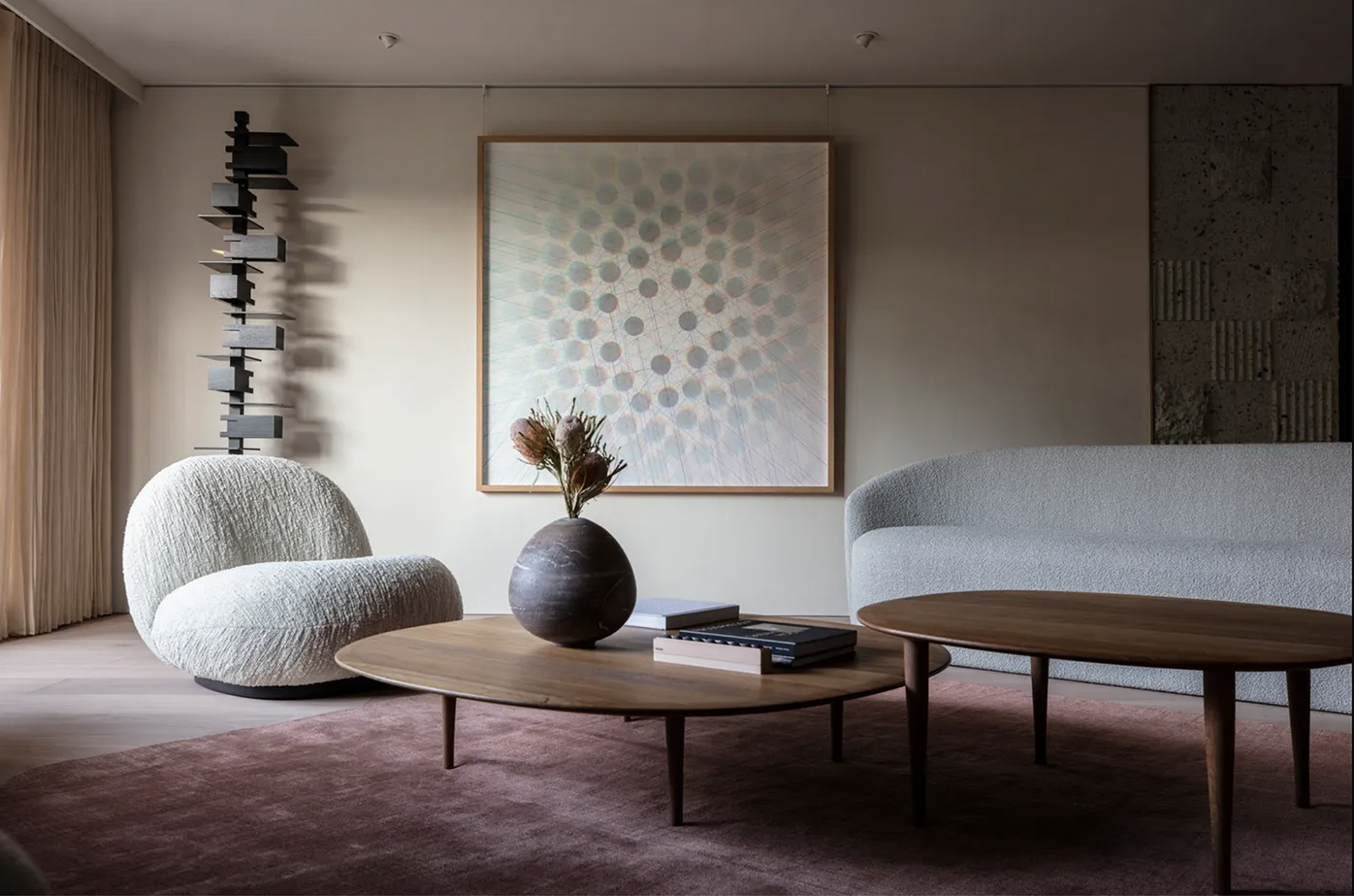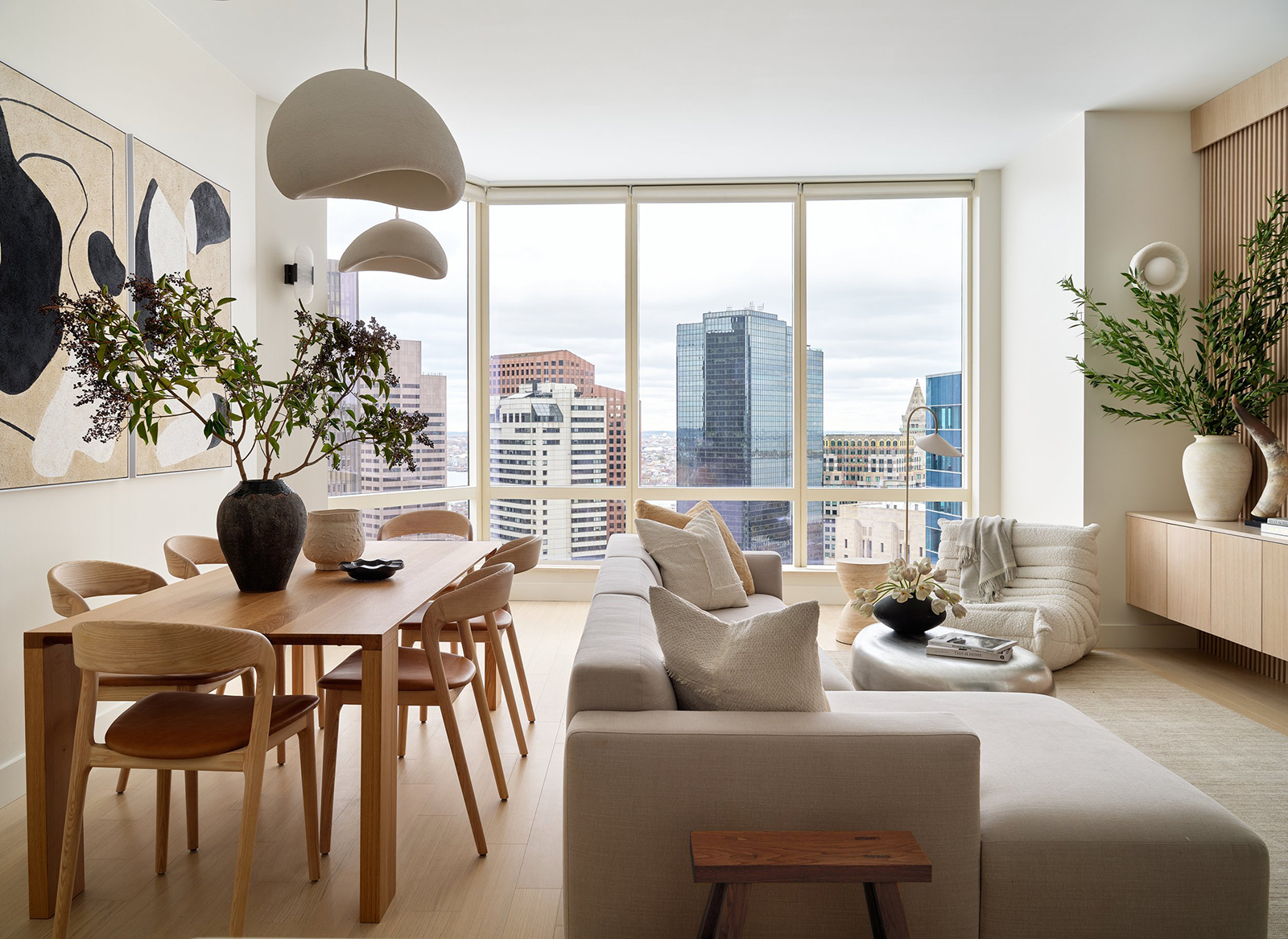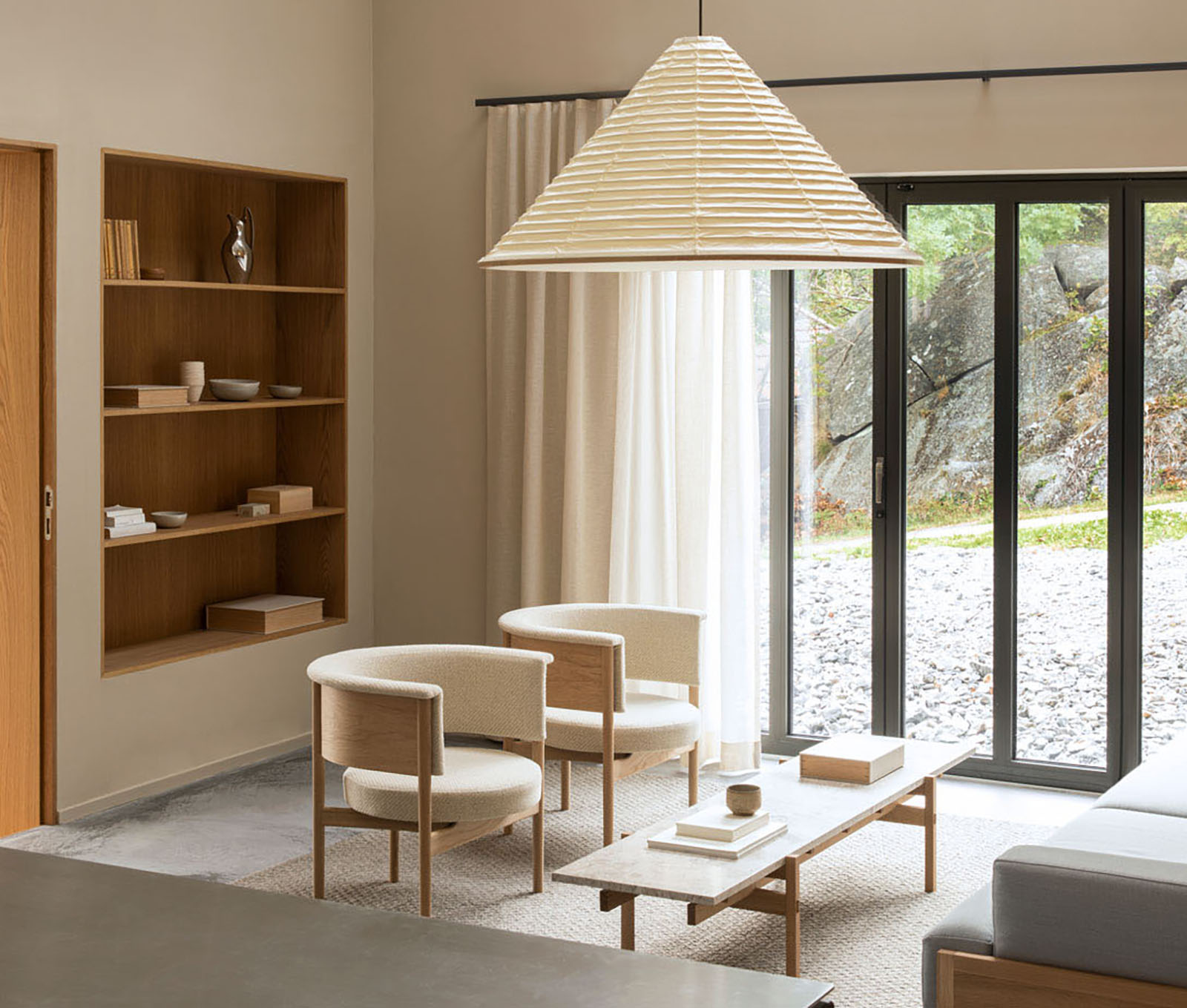In today’s fast-paced world, Japandi design offers a refreshing antidote to cluttered and chaotic interiors. The harmonious blend of Japanese minimalism and Scandinavian functionality offers a perfect balance between comfort and refined elegance. With its emphasis on natural materials, neutral palettes, and purposeful simplicity, Japandi is a design philosophy that aligns seamlessly with contemporary living.
More than just a visual style, it promotes a sense of mindfulness by encouraging intentional choices in both materials and furnishings. This approach not only creates a tranquil atmosphere but also ensures that every space feels curated, inviting, and effortlessly functional.
Kinuta Terrace by Keiji Ashizawa Design - Image Credit: Jonas Bjerre-Poulsen
A Cozy Take on Minimalism
Japandi design first gained popularity in the mid-2010s as a response to the growing desire for interiors that balance minimalism with warmth. It merges the simplicity and craftsmanship of Japanese design with the philosophy of wabi-sabi. Rooted in Zen Buddhism, wabi-sabi embraces imperfection, transience, and natural beauty. It finds beauty in the weathered textures of aged wood, the organic irregularities of hand-thrown pottery, and the quiet elegance of asymmetry. This principle encourages designers to prioritize authenticity over perfection, incorporating raw, natural materials and time-worn finishes that add depth and character to a space.
At the same time, Japandi integrates the Scandinavian concept of hygge, which emphasizes comfort, coziness, and a deep sense of well-being. In practice, this means soft textiles, warm lighting, and an inviting atmosphere that encourages relaxation. Plush throws, layered rugs, and thoughtfully placed candles or fireplaces contribute to a sense of intimacy, making Japandi spaces feel lived-in and welcoming. While minimalism remains central to the aesthetic, hygge ensures that the spaces remain inviting and human-centered.
 East Villa by Vivify Studios - Image Credit: https://vivifyuae.com
East Villa by Vivify Studios - Image Credit: https://vivifyuae.com
Material and Color Selection
Designers implementing Japandi in their projects focus on clean lines, muted color palettes, and a careful curation of materials. It is about achieving balance between minimalism and comfort, between tradition and modernity, and between beauty and practicality. Natural woods such as oak, ash, and walnut are widely used for flooring, furniture, and millwork, bringing warmth and texture to a space. These are often paired with elements like stone, linen, and bamboo to enhance the organic feel. Sustainability also plays a crucial role, as Japandi interiors emphasize longevity and craftsmanship over mass-produced, short-lived trends.
Walls are often finished with natural limewash, textured plaster, or subtle wallpapers that mimic organic materials, creating a muted but visually engaging backdrop. These carefully curated finishes ensure that Japandi spaces remain understated, allowing the beauty of craftsmanship and materiality to take center stage.
 CC Residence by Ecru Studio - Image Credit: https://ecrustudio.com
CC Residence by Ecru Studio - Image Credit: https://ecrustudio.com
One of Japandi’s defining characteristics is its approach to color. While traditional Scandinavian interiors lean towards bright whites and soft grays, Japandi introduces a richer, earthier palette that enhances warmth and depth. Warm beiges, deep greens, charcoal tones, and muted browns are commonly used to create a sense of balance and harmony, drawing inspiration from nature’s organic hues. Soft terracotta, dusky blues, and warm taupes may also be incorporated to add subtle variation while maintaining a cohesive, calming aesthetic.
This tonal subtlety allows designers to craft spaces that feel grounded and inviting without overwhelming the senses. By carefully layering these shades, Japandi interiors achieve a dynamic yet understated look that enhances natural light and emphasizes the beauty of raw materials.
 Tokyo Apartment by OEO Studio - Image Credit: Michinori Aoki
Tokyo Apartment by OEO Studio - Image Credit: Michinori Aoki
Balancing Form and Function
Functionality is just as important as aesthetics in Japandi interiors, ensuring that every element serves a purpose while maintaining a serene and visually pleasing environment. Spaces are carefully curated to maximize both beauty and practicality, often incorporating multi-functional furniture, clever storage solutions, and minimal yet impactful decor. Built-in storage, hidden compartments, and modular furniture are common features that help maintain a clutter-free atmosphere, aligning with Japandi’s emphasis on simplicity and intentionality.
 Azabu Residence by Keiji Ashizawa Design and Norm Architects - Image Credit: https://normcph.com
Azabu Residence by Keiji Ashizawa Design and Norm Architects - Image Credit: https://normcph.com
This design approach makes Japandi particularly well-suited for modern homes, urban apartments, and hospitality spaces where adaptability is key. Whether in compact city dwellings or larger open-concept homes, Japandi interiors promote effortless living by blending smart design choices with timeless aesthetics. Thoughtful zoning techniques, such as using area rugs, sliding screens, or built-in shelving, help define spaces without disrupting the overall flow. The result is a space that not only looks beautiful but also enhances everyday comfort and usability, providing a peaceful retreat from the fast-paced world.
Open layouts are commonly used to instill a sense of fluidity, allowing for easy movement and a more adaptable living experience. Low-profile furnishings, inspired by traditional Japanese interiors, promote a grounded and cozy ambiance while also enhancing spatial efficiency. These pieces, often crafted from natural wood with clean lines and minimal ornamentation, create a sense of openness while maintaining warmth.
 Japandi Condo Boston by Desiree Burns - Image Credit: Sean Litchfield
Japandi Condo Boston by Desiree Burns - Image Credit: Sean Litchfield
Indoor-Outdoor Connection
Another key principle of Japandi design is the seamless integration of indoor and outdoor elements, reinforcing a deep connection to nature. Large windows, sliding doors, and open-plan layouts invite abundant natural light, creating a bright and airy atmosphere that shifts beautifully throughout the day. Beyond maximizing light, these features blur the boundary between interior and exterior spaces, encouraging a sense of continuity and calm. Patios, courtyards, and garden views become natural extensions of the living environment, enhancing the feeling of openness and serenity.

Japandi Residence by Allprace - Image Credit: Jenna Peffley
Indoor greenery, such as bonsai trees, ferns, or potted bamboo, further strengthens this organic connection while improving air quality and adding a sense of tranquility. Many Japandi spaces also incorporate water elements like indoor fountains to introduce a subtle, meditative ambiance. Natural stone, untreated wood, and woven fibers bring outdoor textures inside, fostering a harmonious blend between the built environment and the natural world. Even in urban settings where direct access to nature may be limited, Japandi interiors use organic materials and nature-inspired colors to evoke the peaceful essence of an outdoor retreat.
The focus on abundant natural light creates a bright and airy atmosphere that shifts beautifully throughout the day. Artificial lighting also plays a crucial role in strengthening this connection to connection to nature. Softly diffused fixtures, such as rice paper lanterns, frosted glass pendants, and linen-covered lamps, create a warm glow that mimics the shifting daylight. Sculptural task lighting with organic forms and natural finishes blends seamlessly with raw materials.
 Archipelago House by Norm Architects - Image Credit: Jonas Bjerre-Poulsen
Archipelago House by Norm Architects - Image Credit: Jonas Bjerre-Poulsen
Japandi’s Lasting Appeal
For interior designers, incorporating Japandi elements into a project can elevate the overall feel of a space while maintaining a timeless appeal. Whether specifying raw materials for a bespoke kitchen, sourcing hand-crafted ceramics, or designing a minimalist yet inviting living area, Japandi offers an approach that is both aesthetically striking and deeply functional. Its balance of natural elegance and modern sensibility ensures that it remains a sought-after style for years to come.
 Swatchbox is a premier sample fulfillment service for building product manufacturers. With proprietary software designed by insiders of the design community, Swatchbox helps manufacturers improve product sales and brand affinity by delivering material samples to the design community with speed, intelligence, and style. Learn more and join Swatchbox at www.swatchbox.com.
Swatchbox is a premier sample fulfillment service for building product manufacturers. With proprietary software designed by insiders of the design community, Swatchbox helps manufacturers improve product sales and brand affinity by delivering material samples to the design community with speed, intelligence, and style. Learn more and join Swatchbox at www.swatchbox.com.














